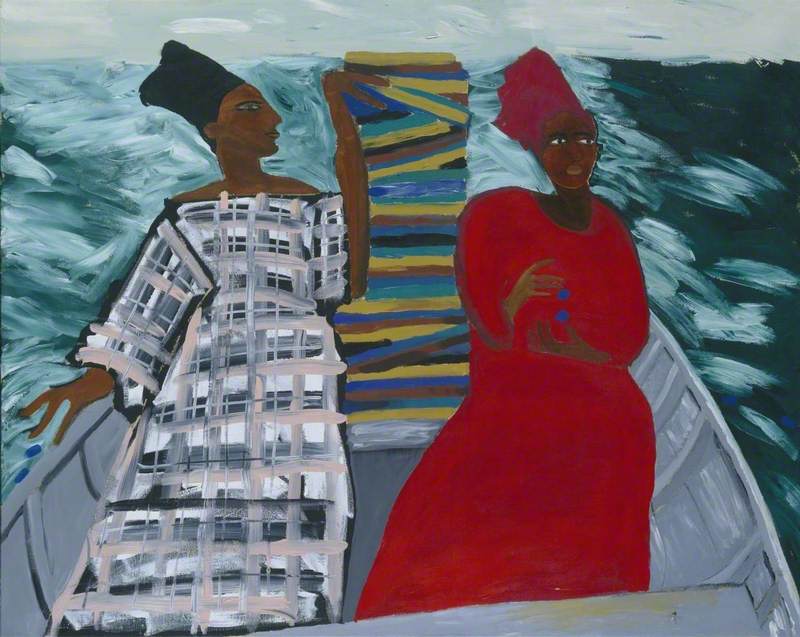
Hettie Judah Explores the Overlooked History of Artists Who Are Mothers

**Exploring the Legacy of Artist-Mothers: A Dialogue Between Art and Motherhood**
The intersection of motherhood and art has continuously been a source of intrigue, contradiction, and debate. One of the most profound questions that keeps emerging, generation after generation, is: Can a mother be an artist? This topic, both rich in content and fraught with difficulty, has resonated with artists, critics, and curators for decades.
Recent contributions to this conversation are both poignant and meaningful. Hettie Judah, a writer and curator, has been a prominent voice advocating for expanding frameworks around artist-mothers. Her recent work, *Acts of Creation: On Art and Motherhood*, which accompanies the eponymous touring exhibition, presents a paradigm for viewing motherhood not in opposition to art, but as a source of creative inspiration. Judah’s book is a sweeping exploration of more than 100 art pieces spanning millennia, celebrating artists whose work celebrates or wrestles with the experience of mothering.
### The Historical Struggles of Artist-Mothers
From feminist exhibitions like *Portrait of a Housewife* in 1977 to ongoing discussions about the marginalization of artist-mothers, the conversation often seems to come full circle. As Su Richardson, a key participant in the feminist art movement, once asked when approached for Judah’s exhibition: “In another 50 years, will we be doing it again?”
Richardson’s frustration stems from a long history of exclusion in which an assumption persists—often unspoken but pervasive—that motherhood inherently conflicts with a serious artistic career. This belief, deeply rooted in societal expectations, has been mused upon and challenged in essays such as Linda Nochlin’s famous “Why Have There Been No Great Women Artists?” and Tillie Olsen’s *Silences*, both of which examined how domestic responsibilities historically stifled women’s creative productivity.
Judah, however, seeks a fresh perspective. Rather than perpetually framing the relationship between art and motherhood as inherently antagonistic, she proposes that art derived from mothering experiences is valuable in its own right—deserving recognition and validation.
### Art and Motherhood: A Theme Across Continents and Centuries
*Acts of Creation* is an ambitious project that seeks to document not only contemporary works by artist-mothers but also art that touches on motherhood throughout history. From ancient fertility figures to modern abstract sculptures, Judah threads a complex narrative that situates motherhood within the broader context of art history.
The book and exhibition cover a striking range of pieces, displaying how motherhood has been interpreted and reinterpreted over thousands of years. From depictions of the Madonna to 20th-century pioneers like Mary Beale, who painted breathtaking portraits of her children in the 1600s, to modern feminist depictions, the nature of “motherhood” has surfaced again and again as a rich subject in both religious and secular art.
Though Judah’s style is more taxonomic than analytical, her curatorial decisions are justified through the breadth of artists she brings to bear on the topic. Spanning globe and time, she highlights not only European art but also works emerging from cultures around the world. Furthermore, she seeks to emphasize that the depiction of maternal experiences transcends the Western canon, with examples ranging from early Indigenous societies to South Asian iconography.
### Motherhood as Creative Inspiration—Not a Limitation
In modern society, a continued undercurrent of doubt exists about whether mothers can balance personal ambitions with the immense demands of child-rearing. Artist mothers, in particular, fight against the notion that their roles as caregivers diminish their artistic vision. Here, Judah has tried resolutely to point out that far from hindering their creativity, many artists have drawn on their experiences as mothers to create compelling and resonant works.
For example, one of the standout pieces in Judah’s exploration is Marlene Dumas’s “The Painter” (1994), a deeply evocative portrait of her child painted with expressive rawness. The figure towers in the canvas, hands smeared in pigment, embodying what Judah identifies as a type of “monstrous child,” which upends traditional soft depictions of children. This image, as Judah points out, stands as a correction to the long-held view that having a child limits creative autonomy—Dumas’s daughter exists both as muse and as extension of her own artistic vision.
Across the book, other artists echo this sentiment. Berthe Morisot from the Impressionist era challenged conventions by depicting the maternal care not only of her own children but also that of wet nurses—thereby honoring the unseen labor women performed in mothering. Similarly, contemporary artist Carmen Winant used intimate, raw photos of women in childbirth and breastfeeding to normalize the daunting physicality of motherhood, rendering a new aesthetic of human struggle and beauty.
### Rewriting Art History for the Artist-Mothers
Throughout *Acts of Creation*, Judah returns to the potent idea that much of art history remains unwritten when